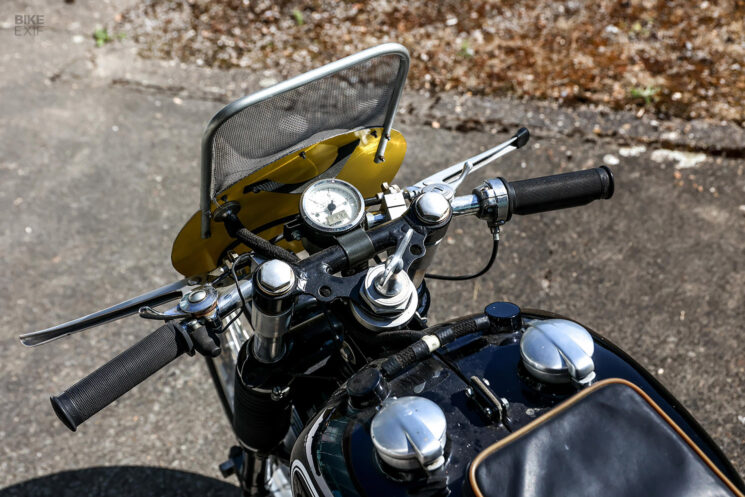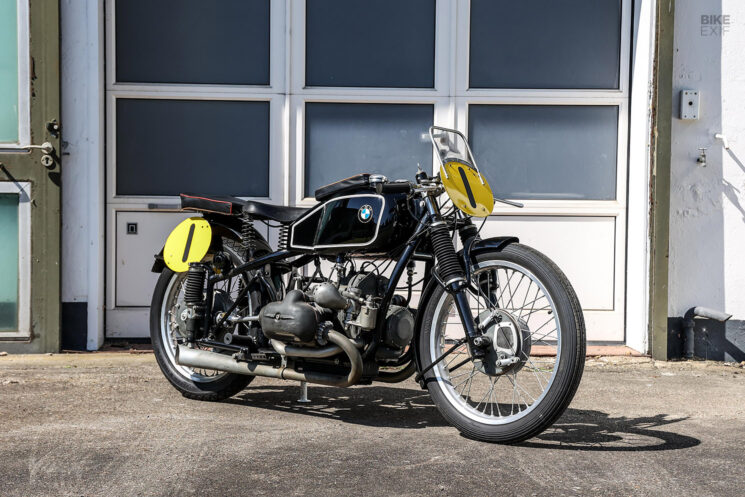
Classic motorcycles attain desirability for any number of reasons, but every once in a while we come across one that checks every conceivable box—in this case—the BMW RS M255 Kompressor. At its core, we’re talking about a Grand Prix-winning motorcycle of staggering mechanical specification—designed with lightweight magnesium hubs and engine cases, and a vane-type supercharger delivering 15 psi. It’s also a witness to one of the most tumultuous periods in history, having been developed and raced in the late 1930s, and surviving the subsequent chaos of the Second World War. Rare from day one, BMW estimates no more than 10 were produced, and just seven are believed to exist today.
BMW has always enjoyed a reputation for technological innovation, and considering the firm started experimenting with forced induction on motorcycles as early as the 1920s, it’s safe to say they’ve earned it. BMW Motorrad was still in its infancy during these days, having pivoted from aircraft engines to motorcycles after World War One and the resulting merger with Bayerische Flugzeugwerke (BFw) in 1922.
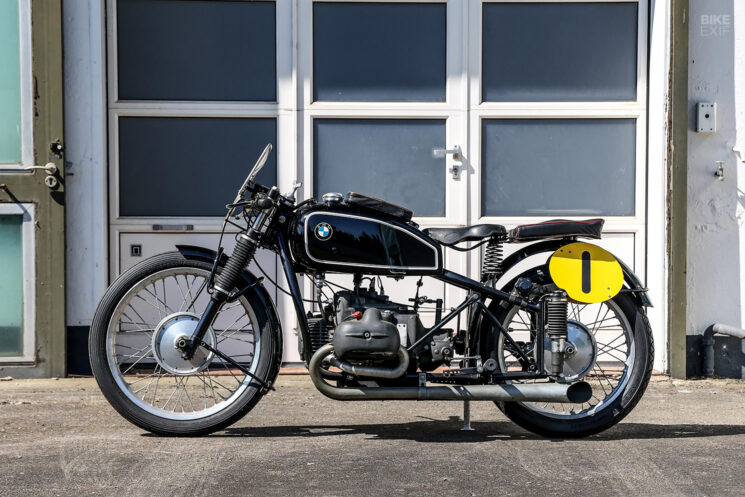
While BMW was still learning how to make road racing bikes that could compete with the Brits, they weren’t wasting time elsewhere and looked to flat-out speed records to put BMW on the map. Just seven short years after BMW built their first motorcycle, Ernst Jakob Henne set a world speed record on a supercharged 750 cc BMW at 134.6 mph (216.7 km/h), and by 1937, he’d set new records as fast as 173.7 mph (279.5 km/h)—an accomplishment that would stand for 14 years.
These early feats proved the merits of forced induction, and while it was still unreliable at times, BMW riders Hans Soenius and Josef Stelzer brought home the first road-racing championships in 1929 in the 500 cc and 750 cc classes respectively, and both on supercharged machines. Success on the race track brought customers into showrooms, and by the end of the 1920s, BMW was selling five times as many motorcycles as it had in 1924.
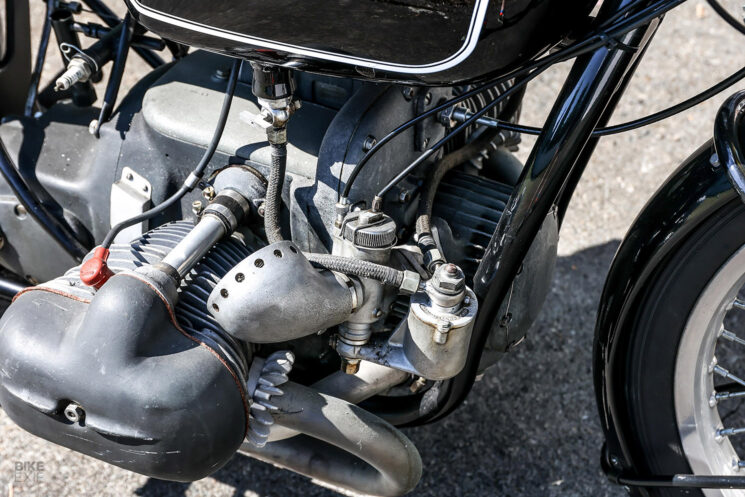
The best was yet to come for BMW’s forced induction program, though, and 1935 saw the introduction of the new Type 255 in place of the outgoing WR. A massive leap in technology, the Type 255 was based on an all-new welded tubular chassis with hydraulically dampened telescoping front forks—a combination that would become the new standard on production models. From ’36 on, plunger-style rear suspension was standard equipment as well.
The four-speed transmission and boxer twin were also completely redesigned items, employing lightweight magnesium cases, aluminum cylinders and all-new bevel-drive, DOHC heads to replace the outgoing pushrod units. The Zoller vane-style supercharger was relocated at this time as well, moving from above the transmission to the front of the boxer engine, and like the hubs and engine cases, its housing was also cast from magnesium. Capable of around 15 psi of boost, the kompressor made all the difference on longer circuits, but could still be finicky and wasn’t used 100% of the time.
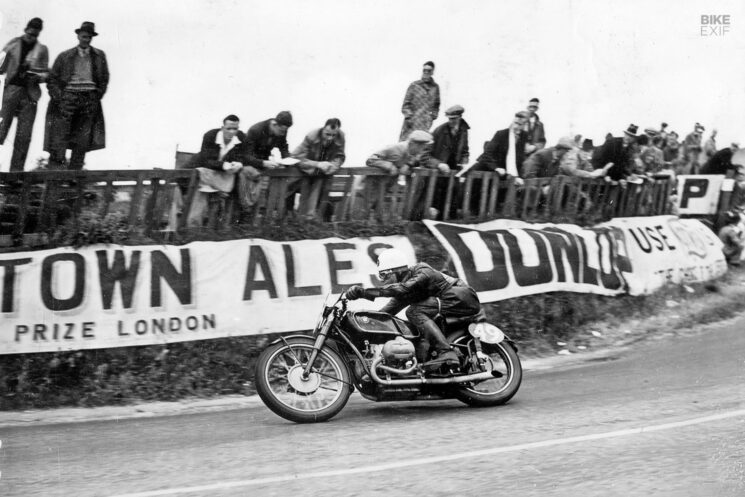
When it was in use, the Type 255 Kompressor was certainly the world-beater of the pre-war years. An available 60 hp propelled the Type 255 to speeds in excess of 140 mph, and the bike weighed just over 300 pounds ready to race, making it among the lightest bikes in its class.
After proving themselves in the International Six Says Trials event in 1935, the RS 255 of Jock West won the Ulster Grand Prix in 1937 and ’38, and Georg Meier swept six major events to become the European Motorcycle Champion in the 500 cc class. Meier and West would go on to a commanding 1-2 finish at the 1939 Isle of Man TT, after leading the entire race. Undoubtedly the most significant road-racing event of the day, the Type 255 Kompressor brought BMW Motorrad its most celebrated early victory.
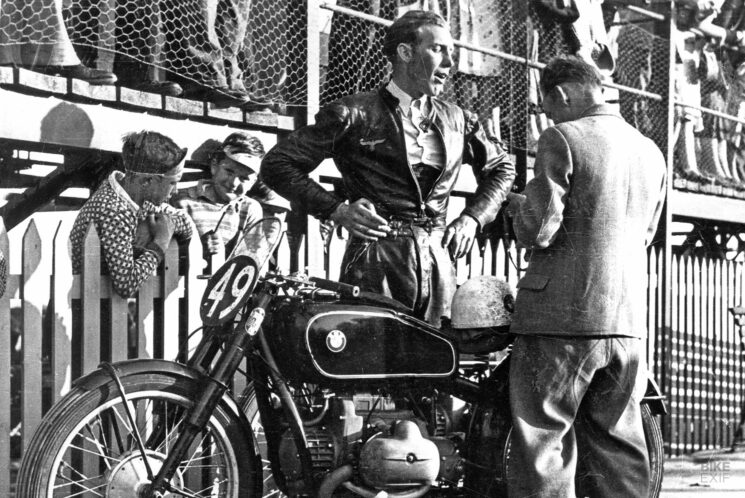
Things would change in a big way for BMW in 1939, as the escalation of World War II meant that its focus would pivot to production for the German army, and worldwide, Grand Prix championship racing came to a halt. As Allied bombing and troops advanced into Germany, one cannot help but imagine where the prized few RS M255 Kompressors were stashed through the duration of hostilities, and if any fell into the eager hands of treasure seekers, looking for a prize to ship home from war-torn Germany.
The immediate post-war years left German companies with bigger worries than motorcycle racing, and BMW’s assets and facilities would end up split between East and West Germany. The nation eventually healed enough to resume motorized competition, but Germany was banned from international events by the FIM until 1951, leaving national competition like the German Grand Prix as the pinnacle of post-war competition. Unsurprisingly, the M255 Kompressors also proved dominant in this period, with Georg Meier winning the German Championship in 1947.
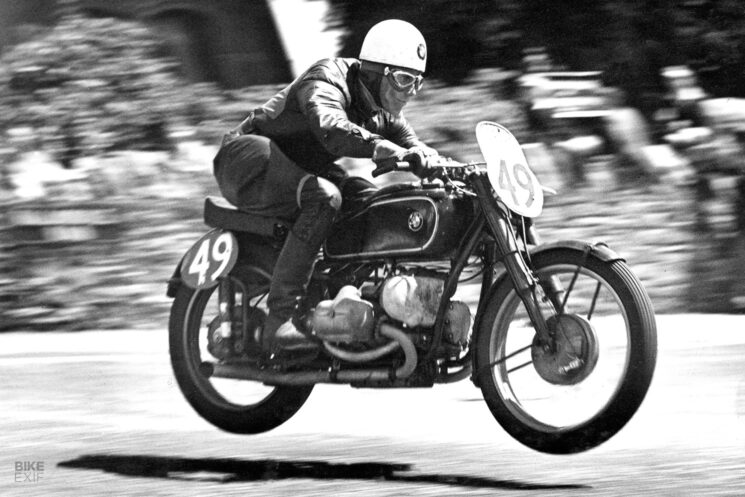
Considering the rigors of competition, the tumultuous wartime years in Germany and the extreme rarity of this model, it’s a miracle that any honest examples of the Type 255 Kompressor survive today. BMW’s best estimate is that no more than 10 were built, of which seven are accounted for, and Bonhams’ Lot 415 *N is one of these precious few. The major components of the motorcycle have been verified by BMW as legit, having been produced between 1938 and 1939, but records fail to connect the bike to any one rider or event.
Where the records fail, we can only reason that this motorcycle has stories to tell. It’s been updated here and there, namely the later leading-axle fork, and was almost certainly used in competition considering the circumstances—if only it could tell.
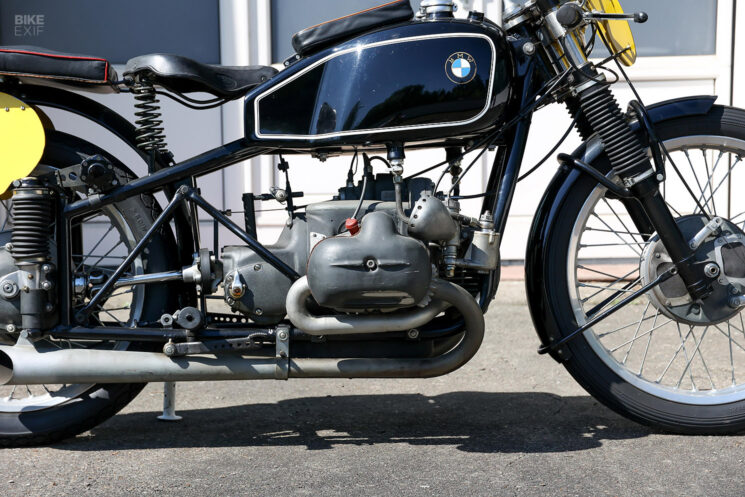
Wearing frame No. 03 on its headstock and plunger, and engine No. D22 on both case halves, Lot 415 looks to be as original as one can expect an extremely-rare, 85-year-old GP racer to be. An exceptional museum-quality motorcycle by any definition, Bonhams estimates the bike will bring between $330,000 and $460,000 [£250,000 – £350,000] at the Autumn Stafford Sale—held October 13, 2024.
Images courtesy of Bonhams.
